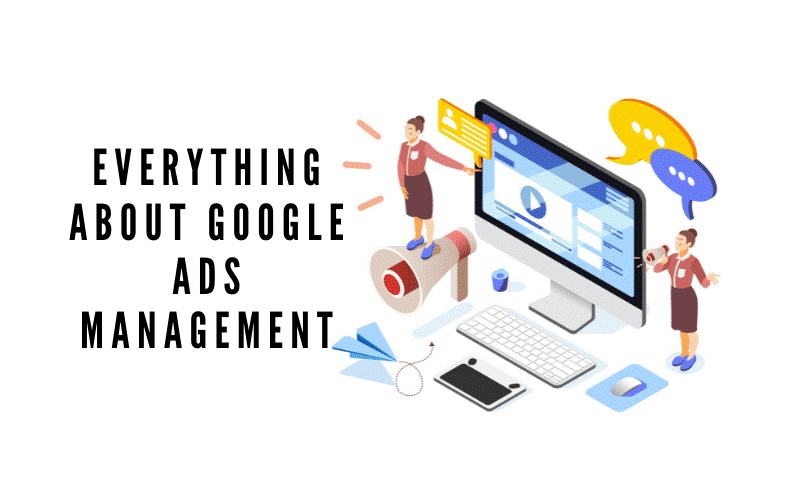Google Ads, which used to be called Google AdWords, is a powerful advertising platform that lets businesses of all sizes create and manage ad campaigns that reach millions of potential customers. Google Ads is a pay-per-click (PPC) advertising platform. This means that businesses only pay when someone clicks on one of their ads. Because of this, it’s a cheap way to reach a large audience and send targeted traffic to a website.
Google ads management
Setting up an account is the first step in running a Google Ads campaign. Businesses need a Google account and to sign up for Google Ads in order to do this. Businesses can start making ad campaigns once the account is set up. For the best AdWords management services, you can get in touch with google ads management services.
On Google Ads, you can create many different kinds of ad campaigns, such as:
1. Search Ads: When someone searches for a specific word or phrase, these ads show up at the top of the search results. They are a great way to get targeted traffic to a website and are often used for e-commerce, lead generation, and product promotion.
2. Display Ads: These ads show up on websites that are part of the Google Display Network. They come in different sizes and types, such as text, image, and video ads. They are a great way to spread the word about a brand and get people to visit a website.
3. Shopping ads: These ads are used to promote products on a website and show up at the top of the search results when someone looks for a specific product. They show a picture of the item, its price, and a link to the website where it can be bought.
4. Video Ads: These are the ads that you see on YouTube and other sites that let you share videos. You can use them to get the word out about a product, service, or brand.
How to run ads on Google
After deciding what kind of campaign to run, the next step is to make ad groups. Each ad group has one or more ads that are all about the same theme or subject. A business that sells clothes, for instance, might make one ad group for men’s clothes and another for women’s clothes.
Businesses can make ads after making ad groups. Ads have a headline, a description, and a URL that shows up on the screen. Ads can also have pictures or videos added to them. The text of the ad should be interesting, relevant, and make people want to read it.
Once the ads are made, businesses can set a budget for their campaign and choose the keywords they want their ads to show up for. People use keywords to search for words or phrases on Google. Businesses can make sure that their ads reach the right people by using the right keywords.
After the campaign is set up and the ads are running, it’s important to keep an eye on how well it’s doing and make changes as needed. This can be done by looking at the click-through rate (CTR), conversion rate, and cost per acquisition of the campaign (CPA).
CTR is the number of people who see an ad and then click on it. The ad is relevant and interesting if it has a high CTR. Conversion rate is the number of people who do something specific on a website, like buy something or fill out a form. A high conversion rate is a good sign that the ad is bringing people who are interested in the website to the site. CPA is the price of getting a new customer or a lead to turn into a sale. If the CPA is low, it’s a good sign that the campaign is worth the money.
Things you should remember
If the campaign isn’t doing as well as expected, businesses can make changes to make it do better. This can be done by changing the text of the ad, focusing on different keywords, or changing the bid for the ad.
The A/B test is another important part of managing Google Ads. This is the process of making two versions of an ad and putting them to the test to see which one does better. This can be done by making two different versions of the ad’s text, headline, or images and then running them both at the same time. By comparing the two ads’ metrics, businesses can figure out which one works better and make changes based on that.
Targeting the right people is another important part of managing Google Ads. Google Ads lets businesses target people based on their interests, behaviors, and demographics. Businesses can make sure that their ads are seen by people who are most likely to be interested in their products or services by focusing on the right audience.
Google Ads also lets businesses target specific locations, which can be helpful for businesses that only serve customers in a certain area. For example, a local restaurant can target people in the area, making it more likely that people who see the ad will go to the restaurant.
Keyword research is one of the most important parts of running Google Ads. Businesses can make sure that their ads reach the right people by choosing the right keywords. Keyword research is the process of finding out what people are searching for on Google and using those words and phrases in an ad campaign. You can do this by using Google’s Keyword Planner tool, which tells you how often certain keywords are searched for and how much competition there is for those keywords.
Lastly, Google Ads management needs to be done on a regular basis. This means that the ad campaign needs to be checked on a regular basis and tweaked as needed. This can be done by changing the text of the ad, focusing on different keywords, or changing the bid for the ad. Businesses can make sure their ads reach the right people and bring the right kind of traffic to their website by keeping an eye on and tweaking their ad campaigns.
Summary
Google Ads is a powerful advertising platform that lets businesses of all sizes create and manage ad campaigns that reach millions of potential customers. Some of the most important parts of Google Ads management are setting up an account, making ad campaigns, ad groups, and ads, setting a budget, choosing keywords and the right audience, monitoring and optimizing the performance of the campaign, A/B testing, and keyword research. By following these best practices and regularly monitoring and optimizing their campaigns, businesses can make sure that their ads reach the right people and bring targeted traffic to their websites, which leads to more sales and revenue.



